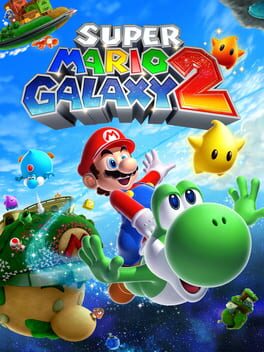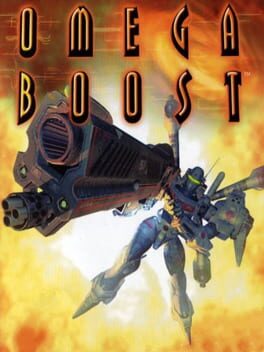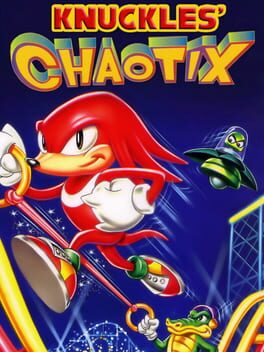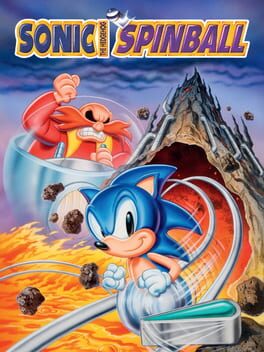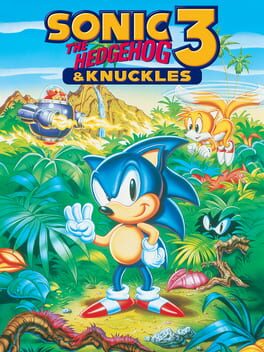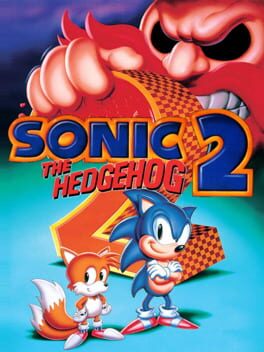H_sanForNow
2010
Having originally been planned as an expansion pack for the first game, Galaxy 2 is largely more of the same, albeit with some changes for the better.
Structurally, while there is a hub-world, it isn't nearly as elaborate as anything we've seen before. Interestingly, the means through which levels are accessed is a linear world map, which, considering the linear levels within these worlds, makes a lot more sense of the kind of game this is.
Galaxy 2 also does some work to remedy Galaxy 1's issue of multiple missions in a galaxy simply repeating content from other missions by having you play through the exact same gauntlet again with minor variations. That still exists here, but it's nowhere near as prominent.
Galaxy 2 could be described as a second draft of Galaxy 1, in terms of general design. It's mostly the same, just cleaned up somewhat.
Structurally, while there is a hub-world, it isn't nearly as elaborate as anything we've seen before. Interestingly, the means through which levels are accessed is a linear world map, which, considering the linear levels within these worlds, makes a lot more sense of the kind of game this is.
Galaxy 2 also does some work to remedy Galaxy 1's issue of multiple missions in a galaxy simply repeating content from other missions by having you play through the exact same gauntlet again with minor variations. That still exists here, but it's nowhere near as prominent.
Galaxy 2 could be described as a second draft of Galaxy 1, in terms of general design. It's mostly the same, just cleaned up somewhat.
2007
Mario's repertoire of moves is seriously downsized compared to previous outings. That's not necessarily a bad thing, but when your competition is Mario 64 and Mario Sunshine, it's hard to say that was the right call. You could say that about a lot of things in this game. Mario Galaxy still takes structural cues from 64 in that you require collectables from levels to unlock new levels, but it follows Sunshine's structure as well of every level unlocking new levels in a linear sequence. This is simultaneously not as much and more of a problem than it was in Sunshine. And a lot of it comes down to the fact that Galaxy is a linear course-clear game, not a collectathon like its older siblings, despite its overarching progression structure. The end of levels just happen to be marked with a collectable.
It's more of a problem than in Sunshine because a lot of the multiple missions for each Galaxy involve you retreading a lot of the same ground you've already covered. It's less so in some cases however where sometimes missions take you to completely different places inaccessible in prior missions to where they may as well be whole new levels.
So Galaxy is a bit of a muddled game. It takes a lot of structural cues from very open-ended games while being a linear game itself. Of course, taking their structure, it's quite open outside of the context of a single galaxy, but the constant repetition of content to pad out its star count can get quite frustrating. The attempt to carry over the progression structure of its predecessors, with the hub-world and the star unlocks giving you plenty of choices in levels seems somewhat pointless considering the structure of each individual level. No longer is the hub-world a microcosm of the levels you'll be visiting, but something unlike them entirely, making for a stark disconnect which doesn't exist in prior titles.
Super Mario Galaxy has a bit of an identity crisis to say the least. The challenges it presents are generally well designed, but the repetition of content and the odd mixing and matching of different design philosophies does not do it any favours.
It's more of a problem than in Sunshine because a lot of the multiple missions for each Galaxy involve you retreading a lot of the same ground you've already covered. It's less so in some cases however where sometimes missions take you to completely different places inaccessible in prior missions to where they may as well be whole new levels.
So Galaxy is a bit of a muddled game. It takes a lot of structural cues from very open-ended games while being a linear game itself. Of course, taking their structure, it's quite open outside of the context of a single galaxy, but the constant repetition of content to pad out its star count can get quite frustrating. The attempt to carry over the progression structure of its predecessors, with the hub-world and the star unlocks giving you plenty of choices in levels seems somewhat pointless considering the structure of each individual level. No longer is the hub-world a microcosm of the levels you'll be visiting, but something unlike them entirely, making for a stark disconnect which doesn't exist in prior titles.
Super Mario Galaxy has a bit of an identity crisis to say the least. The challenges it presents are generally well designed, but the repetition of content and the odd mixing and matching of different design philosophies does not do it any favours.
2002
Even more interesting movement mechanics than its predecessor, with mostly great levels to boot (if significantly fewer of them, unfortunately), but which seriously kicks itself in the foot by forcing the player to complete each stage's missions in a linear order, which severely undermines the point of why the levels in Mario 64 were designed to be open sandboxes in the first place. While the moment-to-moment gameplay is arguably more nuanced than 64, its structural problems and serious downsizing in scope relative to it kneecap it in comparison severely.
1999
A 3D mech shooter which blows my mind in managing to capture the feeling of the kinds of dogfights you see in anime between two mechs or otherwise flying characters zipping about blasting at each other. Frankly I didn't think it was possible, but with its mechanic of being able to orient the player's movement in a sphere around locked-on targets but still aim independently to said lock-on, it makes for a shockingly fluid control scheme which solves a lot of the difficulties of full 3D movement more elegantly than a lot of games released after it. The mechanic of locking on to the same target multiple times before firing to deal more damage per shot also helps in adding meaningful decision-making to the shooting as opposed to just blasting away any chance you get. The game manages to be extremely stylish and substantive at the same time.
Some levels are more open-ended and others are built like a rail-shooter. While the full-range stages are of course impressive, the use of 3D with the lock-on to flip the camera from the back to the front to hit targets zipping past or coming up behind you is a really smart use of the new gen technology. it really makes me appreciate this era when 3D wasn't simply taken for granted, but as a new novelty to be experimented with, thus granting us gems like this which play with it in ways you rarely see even today.
Some levels are more open-ended and others are built like a rail-shooter. While the full-range stages are of course impressive, the use of 3D with the lock-on to flip the camera from the back to the front to hit targets zipping past or coming up behind you is a really smart use of the new gen technology. it really makes me appreciate this era when 3D wasn't simply taken for granted, but as a new novelty to be experimented with, thus granting us gems like this which play with it in ways you rarely see even today.
A very tightly designed 2.5D platformer which takes full advantage of 3D space by allowing the player to interact with the foreground and background via the core mechanics of picking up and throwing enemies, as well as stages wrapping around and looping back on each other for intricate puzzle-platforming challenges.
1996
Mario 64 to this day is one of the best games its genre has to offer. Its movement mechanics are extremely fluid save for one minor frustration where sometimes Mario will circle 'round his current position when you pull back in the opposite direction instead of just snapping to it, which can sometimes lead to falling off platforms accidentally. Its level design is extremely tight despite how open it is, with everything being compact and interconnected to make for smooth, fluid navigation to points of interest, with interesting objectives pulling you around the maps, with multiple means of getting to most places allowing for creativity to shine through. My only criticism of the level design would be the last handful of levels where they seem to be stretched thin or structured to force the player to repeat things they've already done multiple times over, which can be frustrating. Aside from those minor hiccups though, its one of the greats, for sure.
1995
Chaotix is a game which takes the idea of Sonic as a physics based platformer in an interesting direction. You technically play as two characters at once, controlling one, with the other being bound to you by a rubber-band. You can press the "hold" button to lock your partner in place, turning them into an anchor from which you can stretch the tether out by pulling away from them, then releasing hold to blast off in the direction you're pulling, or release the d-pad to be pulled back towards them, after which you can release hold to be flung back the other way.
This is all well and good, but many people struggle with the mechanic because the most important element of how it works is never explained to the player. In the air, the hold button works slightly differently. Rather than anchoring your partner to a spot, it switches who is the heavier character. When not held, you, the player, are the heavier character, and the game will prioritise your inputs over your partner's. But if you hold "hold" in the air, your partner will become the heavier one, pulling you around with them. They will also take priority if they're pulling on the cord while you aren't making any inputs. The latter, and the lack of clarity as to how this works can make the mechanic seem broken and unwieldy, but once you understand how it works it is one of the most interesting platforming tools I've ever seen.
If you grab your partner (press hold while standing next to them), throw them upwards and press hold as they fly up, they will pull you into the air, then if once you pass them, you release hold, you will be able to launch far higher than a regular jump can take you. You can also grab your partner in mid-air to repeat this, allowing you to essentially juggle yourself and your partner infinitely if you're skilled enough. You can also throw your partner in different directions for different results. In essence, your partner acts as a counterweight in the air. Once you understand this, the game opens up into some of the most nuanced platforming ever, even among other Sonic games. It's honestly incredible.
The only mechanical flaw I can identify is an admittedly pretty significant physics bug. When facing left, all variables pertaining to how the game should respond to interactions with sloped terrain are inverted. For example, typically, when you jump off an upward slope, you should gain height at the cost of horizontal motion. When facing left, the opposite happens. It can be quite intrusive whenever the game does ask you to maneuver left.
The other major issue with the game is not one of mechanics, but level design. The levels in this game suffer from massive reuse of setpieces and a serious lack of variety in mechanics and level structures. Considering this is one of, if not the longest Sonic game so far in terms of level count, this can get tiring fast as every level is unique largely in name only.
Chaotix is a very deep game spread quite thin across levels which are well designed in a vacuum for the most part, but which all begin to blend into each other despite the game's stellar art direction giving each game its own unique vibe.
This is all well and good, but many people struggle with the mechanic because the most important element of how it works is never explained to the player. In the air, the hold button works slightly differently. Rather than anchoring your partner to a spot, it switches who is the heavier character. When not held, you, the player, are the heavier character, and the game will prioritise your inputs over your partner's. But if you hold "hold" in the air, your partner will become the heavier one, pulling you around with them. They will also take priority if they're pulling on the cord while you aren't making any inputs. The latter, and the lack of clarity as to how this works can make the mechanic seem broken and unwieldy, but once you understand how it works it is one of the most interesting platforming tools I've ever seen.
If you grab your partner (press hold while standing next to them), throw them upwards and press hold as they fly up, they will pull you into the air, then if once you pass them, you release hold, you will be able to launch far higher than a regular jump can take you. You can also grab your partner in mid-air to repeat this, allowing you to essentially juggle yourself and your partner infinitely if you're skilled enough. You can also throw your partner in different directions for different results. In essence, your partner acts as a counterweight in the air. Once you understand this, the game opens up into some of the most nuanced platforming ever, even among other Sonic games. It's honestly incredible.
The only mechanical flaw I can identify is an admittedly pretty significant physics bug. When facing left, all variables pertaining to how the game should respond to interactions with sloped terrain are inverted. For example, typically, when you jump off an upward slope, you should gain height at the cost of horizontal motion. When facing left, the opposite happens. It can be quite intrusive whenever the game does ask you to maneuver left.
The other major issue with the game is not one of mechanics, but level design. The levels in this game suffer from massive reuse of setpieces and a serious lack of variety in mechanics and level structures. Considering this is one of, if not the longest Sonic game so far in terms of level count, this can get tiring fast as every level is unique largely in name only.
Chaotix is a very deep game spread quite thin across levels which are well designed in a vacuum for the most part, but which all begin to blend into each other despite the game's stellar art direction giving each game its own unique vibe.
Sonic Spinball takes the idea of Sonic as a walking pinball to its logical extreme and builds levels like giant pinball tables. This is honestly a pretty cool idea; it really leans into the physics based platforming Sonic was founded on. It also gives the player objectives to complete within the level to open up the exit, which adds extra layers to puzzling out the fastest route to the goal, which is an appreciated attempt at adding depth to the gameplay loop.
With that said, it severely fumbles the bag in execution. Sonic levels in other games of the era were built around wide open spaces to give the player room to experiment with Sonic's fluid mechanics. Precision was rarely ever expected of the player except at the skill ceiling of going for time-attack runs, when the full scope of the game's nuances could be drawn out. Especially in the context of pinball table-esque levels, asking the player to launch Sonic through tight, cramped corridors and into highly precise spots to progress could easily prove frustrating as a result of how little control over the minutia of how Sonic moves in that context, and Sonic Spinball proves this correct. More than anything, a vast majority of your playtime with Sonic Spinball will be spent trying and trying to launch Sonic at just the right angle on extremely-wonkily programmed pinball flippers (unlike those in Sonic 2's Casino Night, which are perfectly fine) into the smallest gaps imaginable to no avail. This is possibly the most difficult Sonic game of all time for all the wrong reasons, as most of the challenge is a result of factors largely out of the player's hands. Tossing Sonic around these levels can make for depthful navigation, except when what's demanded of you is more precise than anything the mechanics and programming are built to facilitate.
In this way, Sonic Spinball fundamentally misunderstands the mechanical merit of Sonic as a series.
With that said, it severely fumbles the bag in execution. Sonic levels in other games of the era were built around wide open spaces to give the player room to experiment with Sonic's fluid mechanics. Precision was rarely ever expected of the player except at the skill ceiling of going for time-attack runs, when the full scope of the game's nuances could be drawn out. Especially in the context of pinball table-esque levels, asking the player to launch Sonic through tight, cramped corridors and into highly precise spots to progress could easily prove frustrating as a result of how little control over the minutia of how Sonic moves in that context, and Sonic Spinball proves this correct. More than anything, a vast majority of your playtime with Sonic Spinball will be spent trying and trying to launch Sonic at just the right angle on extremely-wonkily programmed pinball flippers (unlike those in Sonic 2's Casino Night, which are perfectly fine) into the smallest gaps imaginable to no avail. This is possibly the most difficult Sonic game of all time for all the wrong reasons, as most of the challenge is a result of factors largely out of the player's hands. Tossing Sonic around these levels can make for depthful navigation, except when what's demanded of you is more precise than anything the mechanics and programming are built to facilitate.
In this way, Sonic Spinball fundamentally misunderstands the mechanical merit of Sonic as a series.
A step forward and a step back. Sonic 3 is more consistent than Sonic 1, far more elaborate than any of its predecessors, but doesn't quite reach the level of CD.
3K's most interesting addition is the elemental shields. Previous Sonic games had the speed shoes, a power-up that could be found in levels which uncapped Sonic's top speed and acceleration, allowing the player to pull off feats that would otherwise be impossible. In 1 and CD, it was used to force players to think harder about what the fastest route through levels really was, as they were often placed in out of the way locations which may have seemed slow at first, but which afforded so many more possibilities than ignoring them upon experimentation. 2 fumbled the bag quite a bit in this regard by often giving them to the player for free, but 3K elaborates on the idea of the speed shoes in the spirit of 1 and CD greatly by carrying over their use of it, but with new and interesting abilities which create unique traversal options for players who are skilled enough to hold onto them long enough without getting hit to make proper use of them. It's frankly an ingenious addition.
The insta-shield or the double spin attack is also another fantastic addition, allowing players to phase through enemy and projectile hitboxes with a super precise button press while also extending Sonic's own hitbox to hit out of reach foes to make bouncing on them less strict. All it does is add another layer of skill to keeping the flow going.
This game isn't all positives though. With the introduction of Takashi Iizuka as a level designer, his most well-known characteristic of indulgence in shallow spectacle where control is taken away from the player to show them something visually striking but which gets in the way of the fluid, player controlled experience first rears its ugly head here. Sonic thrives on the variables in its mechanics. So anything which interrupts or gets in the way of that is a problem. It's not a constant problem, but it certainly is one. This includes instances of the player being stopped dead in their tracks unavoidably and forced to use the spindash. This could hardly be called a challenge as much as an example of call-and-response. It sucks on two levels in that it forces the player to stop, but also that it takes away the player's agency by only affording them one method of progression, which is the exact opposite of the mechanical strengths of this series. "stop-and-go" is the term for this trait, and it's a problem.
Sonic 3 is a spectacular game, in more ways than one...On the one hand, it has some stellar level design following in the footsteps of 1 and CD. On the other, it similar to Sonic 2, is the beginning of what will gradually become one of the series' worst trends.
3K's most interesting addition is the elemental shields. Previous Sonic games had the speed shoes, a power-up that could be found in levels which uncapped Sonic's top speed and acceleration, allowing the player to pull off feats that would otherwise be impossible. In 1 and CD, it was used to force players to think harder about what the fastest route through levels really was, as they were often placed in out of the way locations which may have seemed slow at first, but which afforded so many more possibilities than ignoring them upon experimentation. 2 fumbled the bag quite a bit in this regard by often giving them to the player for free, but 3K elaborates on the idea of the speed shoes in the spirit of 1 and CD greatly by carrying over their use of it, but with new and interesting abilities which create unique traversal options for players who are skilled enough to hold onto them long enough without getting hit to make proper use of them. It's frankly an ingenious addition.
The insta-shield or the double spin attack is also another fantastic addition, allowing players to phase through enemy and projectile hitboxes with a super precise button press while also extending Sonic's own hitbox to hit out of reach foes to make bouncing on them less strict. All it does is add another layer of skill to keeping the flow going.
This game isn't all positives though. With the introduction of Takashi Iizuka as a level designer, his most well-known characteristic of indulgence in shallow spectacle where control is taken away from the player to show them something visually striking but which gets in the way of the fluid, player controlled experience first rears its ugly head here. Sonic thrives on the variables in its mechanics. So anything which interrupts or gets in the way of that is a problem. It's not a constant problem, but it certainly is one. This includes instances of the player being stopped dead in their tracks unavoidably and forced to use the spindash. This could hardly be called a challenge as much as an example of call-and-response. It sucks on two levels in that it forces the player to stop, but also that it takes away the player's agency by only affording them one method of progression, which is the exact opposite of the mechanical strengths of this series. "stop-and-go" is the term for this trait, and it's a problem.
Sonic 3 is a spectacular game, in more ways than one...On the one hand, it has some stellar level design following in the footsteps of 1 and CD. On the other, it similar to Sonic 2, is the beginning of what will gradually become one of the series' worst trends.
1993
Sonic CD, simply put, is Sonic 1, but improved in almost every respect. Sonic 1 was structured with a back-and-forth structure of levels built to take advantage of its mechanics to the max, and levels which held off on them out of fear players would be overwhelmed. Sonic CD does away with this and goes all in on building ballin' labyrinths for players to puzzle their way to speed through, and it comes out as a much more consistent product as a result. There are plenty of stages focused more on traditional platforming, but unlike in Sonic 1 where these sequences are often mandatory breaks from the regular engagement, CD uses them as punishments for a lack of engagement with the mechanics, be that through ignorance or stubbornness. Even moreso than its predecessor, Sonic CD is a game about platforming via ball physics.
This is accentuated even more by the game's secondary objective, and its most iconic addition; time travel. Every Sonic game has an "emerald hunt" so to speak; some side-quest players can engage with aside from learning to time-attack or otherwise simply beating the levels. Most of these emerald hunts across the series are quite poorly designed, being an irrelevant distraction from the core gameplay which, rather than reinforcing the core engagement, asks something of the player which has so little to do with said engagement that by the time the player is finished, the game has likely undone all its work to condition it to play it as intended. Sonic CD is one of the worst offenders in this regard with how elaborate its time travel system is. Players are asked to find signs across the level to imbue them with the power to travel forward or back in time, with which they must find a means of maintaining top speed long enough throughout the stages to warp, after which they must locate a generator in the past in every level to secure the good ending (alternatively, they can copy Sonic 1's system and take 50 rings to the end of a stage to play a min-game for one of 6 collectables). The engagement of time travel itself, being the most explicitly explorative Sonic has ever been up to this point and will continue to be for years to come, is starkly at odds with the core gameplay loop. However, unlike almost every other emerald hunt to date, it does 2 worthwhile things. Well, 1.5 things depending on how you look at it...
Firstly it forces players to become skilled at using the mechanics to maintain an uninterrupted flow-state through levels. it demands a lot of players in regards to using the mechanics, even if it's not in service of the regular course-clear structure's intentions. Well, at least in theory. With there being plenty of setpieces strewn across levels where the player can accomplish time travel with little to no effort, this smart idea goes largely to waste. Secondly, this more open structure forces a lot more creativity onto the player in how they navigate levels. Sonic 2's level structure of the top route always being the fastest which diluted it so much is extremely rare here. It is saved for a particular handful of levels to make them stand out as unique among the bunch. Because of how different parts of level weave together and interact for the purposes of not just moving forward, but in all directions, navigation is nuanced and ever-changing. While perhaps on accident, this in turn very much aids the structural intentions of the core gameplay loop. Perhaps this is the reason the levels are so much more consistent than Sonic 1's.
In short, Sonic CD plays with Sonic as a walking pinball in creative and interesting ways, demanding more of the player than Sonic 1 and its alternative in the form of Sonic 2. Not only that, it beats them both at their own game.
This is accentuated even more by the game's secondary objective, and its most iconic addition; time travel. Every Sonic game has an "emerald hunt" so to speak; some side-quest players can engage with aside from learning to time-attack or otherwise simply beating the levels. Most of these emerald hunts across the series are quite poorly designed, being an irrelevant distraction from the core gameplay which, rather than reinforcing the core engagement, asks something of the player which has so little to do with said engagement that by the time the player is finished, the game has likely undone all its work to condition it to play it as intended. Sonic CD is one of the worst offenders in this regard with how elaborate its time travel system is. Players are asked to find signs across the level to imbue them with the power to travel forward or back in time, with which they must find a means of maintaining top speed long enough throughout the stages to warp, after which they must locate a generator in the past in every level to secure the good ending (alternatively, they can copy Sonic 1's system and take 50 rings to the end of a stage to play a min-game for one of 6 collectables). The engagement of time travel itself, being the most explicitly explorative Sonic has ever been up to this point and will continue to be for years to come, is starkly at odds with the core gameplay loop. However, unlike almost every other emerald hunt to date, it does 2 worthwhile things. Well, 1.5 things depending on how you look at it...
Firstly it forces players to become skilled at using the mechanics to maintain an uninterrupted flow-state through levels. it demands a lot of players in regards to using the mechanics, even if it's not in service of the regular course-clear structure's intentions. Well, at least in theory. With there being plenty of setpieces strewn across levels where the player can accomplish time travel with little to no effort, this smart idea goes largely to waste. Secondly, this more open structure forces a lot more creativity onto the player in how they navigate levels. Sonic 2's level structure of the top route always being the fastest which diluted it so much is extremely rare here. It is saved for a particular handful of levels to make them stand out as unique among the bunch. Because of how different parts of level weave together and interact for the purposes of not just moving forward, but in all directions, navigation is nuanced and ever-changing. While perhaps on accident, this in turn very much aids the structural intentions of the core gameplay loop. Perhaps this is the reason the levels are so much more consistent than Sonic 1's.
In short, Sonic CD plays with Sonic as a walking pinball in creative and interesting ways, demanding more of the player than Sonic 1 and its alternative in the form of Sonic 2. Not only that, it beats them both at their own game.
1992
Sonic the Hedgehog 2 is a step backwards from its predecessor in seemingly minor but surprisingly damaging ways. The introduction of the spindash heavily downplays the significance of the terrain as an obstacle for the player to overcome now that an instant burst of speed is in their back pocket at all times. While the spindash's power is offset by the need to stop and charge it, the existence of a means of gaining speed without having to think about it and engage with the core platforming mechanics can easily create a mindset in players of thinking brute-forcing their way through everything is the best solution. And in Sonic 2's case, it sometimes is. The other problem, which in part facilitates the bad habits enabled by the spindash is the structure of individual level layouts. Sonic 1's stages rarely had one single fastest path to the end, rather, requiring the player to connect different routes together to find which segment of different parts of routes could be combined together to get the best results. In Sonic 2, sticking to the top route all the time is rewarded in approximately 64% of levels. When the player recognises this habit across the game, almost all of the work put into other routes by the designers becomes meaningless as players lose any reason to bother exploring anywhere in the levels that doesn't take them up, resulting in a lot of wasted effort on the developers' part on massive swaths of game designed to be neglected as opposed to puzzled through as in the first game. It does not help that in quite a few cases the best results can be found by taking the path of least resistance through levels, which is a shame. This is not a consistent problem though. Far more often, while much simpler than its predecessor, the game still provides plenty of challenge to a player who wants to attain a clean, fluid rush across Westside Island.
In short, Sonic the Hedgehog 2 is a much shallower game than its predecessor. Sonic is known for having over time become a flanderisation of its former self; so caught up in its own marketing around the idea of speed that it forgets to be an engaging platformer. Sonic 2, while not egregiously offensive in and of itself, is noteworthy as the first misstep in that regard.
In short, Sonic the Hedgehog 2 is a much shallower game than its predecessor. Sonic is known for having over time become a flanderisation of its former self; so caught up in its own marketing around the idea of speed that it forgets to be an engaging platformer. Sonic 2, while not egregiously offensive in and of itself, is noteworthy as the first misstep in that regard.
1991
A game with some of the most nuanced platforming mechanics you'll ever find which executes on them somewhat inconsistently. The game was structured with the conceptually admirable yet ultimately bad idea of going back and forth between "high speed thrill" levels and slower paced levels. What this really means in practice is that the game is kind of split down the middle, jumping back and forth between levels which engage with its core mechanics in interesting and deep ways, and those which, in trying to imitate other, more traditional platformers, actively disengages with its own mechanics, which is never a good thing in any game. Fortunately, the split isn't quite 50/50 of good to bad. There's definitely more to praise than to criticise. And if anything, that itself is an accomplishment worth noting considering how novel of a concept a platformer built around ball physics and the process of speedrunning was at the time.
